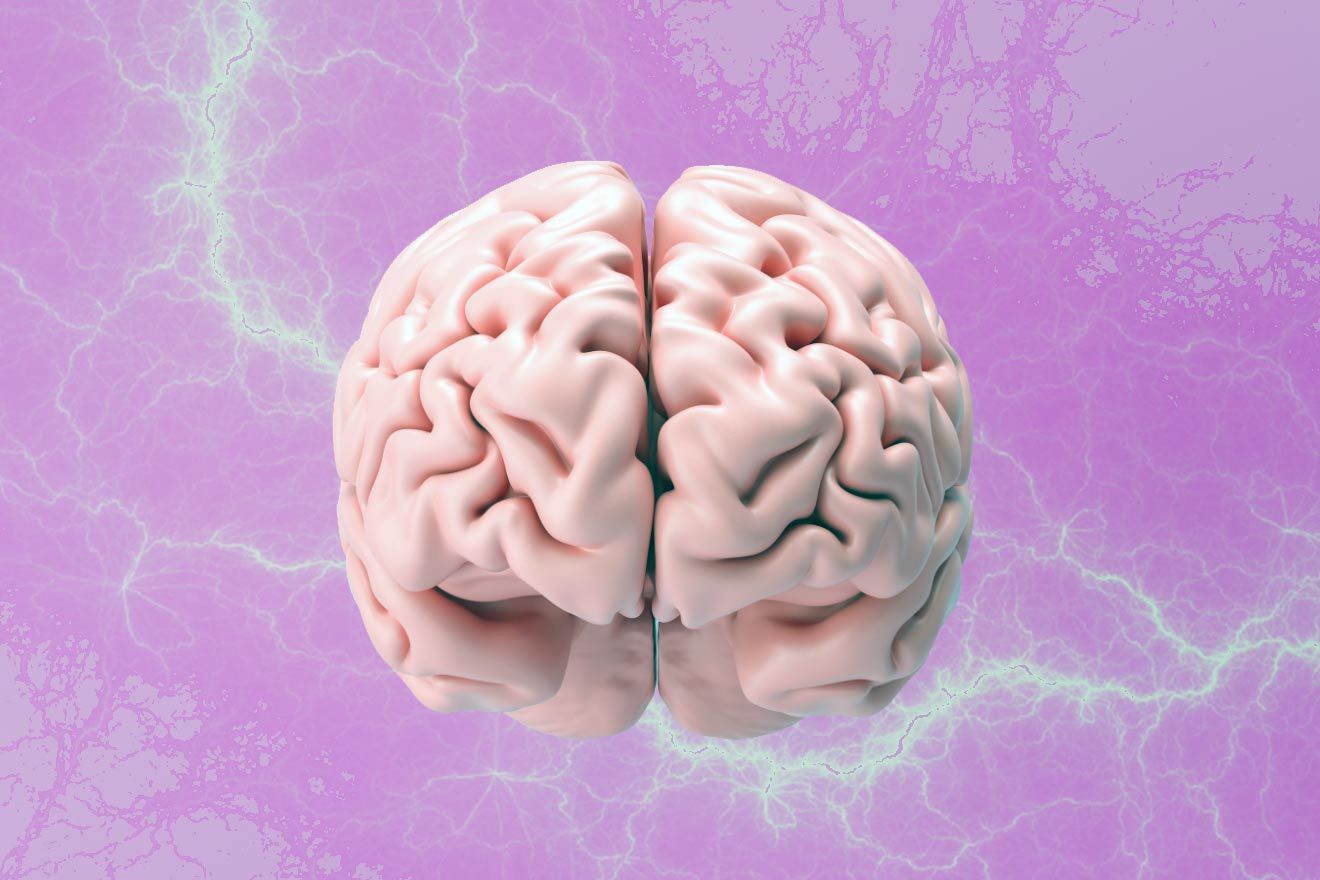Psychedelic therapy and electroconvulsive therapy are used to help patients with treatment-resistant mood disorders. But when does it make sense to use one over the other? What are their side effects and risks? Let’s talk about the implications of psychedelic therapy vs. electroconvulsive therapy.
Psychedelic therapy is posed to significantly impact mental health in the next several years. In trials, we’ve seen psychedelics help patients with treatment-resistant depression, post-traumatic stress disorder, and more. Many of these patients had frustratingly little success with traditional talk therapy and medication.
Several of the diagnoses that psychedelics have helped with are currently treated with Electroconvulsive Therapy (ECT). ECT is most commonly used for patients with mood disorders resistant to prior treatments. While it’s had a controversial path to legitimacy, ECT is now considered a safe and effective mental health treatment [1].
Psychedelic Support is looking forward to a world where psychedelic therapy is accessible to everyone who needs it. But are there times when ECT is preferable to psychedelics? What are the clinical implications of both treatments? Let’s talk about psychedelic therapy vs. electroconvulsive therapy.
Follow your Curiosity
Sign up to receive our free psychedelic courses, 45 page eBook, and special offers delivered to your inbox.Psychedelic Therapy vs. ECT: When and Why They’re Prescribed
Psychedelic therapy and ECT have each been shown to be helpful for a range of diagnoses. There’s some overlap between the types of patients they could each be prescribed for.
Who Can Get Relief From Psychedelics?
Most psychedelics are still not legal yet, but we expect commercialization in the next few years. When substances like MDMA and psilocybin are FDA-approved, we anticipate on-label uses for several mental health diagnoses.
Ketamine therapy is already being used to treat depression and bipolar disorder [2]. It’s considered a suitable option for patients who have exhausted medication options. Ketamine’s rapid antidepressant effects set it apart from other treatments. While SSRIs may take weeks to work (and for many patients, they never do), ketamine works to elevate mood within hours [3].
One of the first diagnoses we expect other psychedelics to be prescribed for is post-traumatic stress disorder (PTSD). Patients with PTSD present a massive unmet need since talk therapy and medication may offer little relief. In clinical trials using MDMA-assisted therapy, even patients with severe PTSD experienced lasting and profound symptom remission [4].
Psilocybin has been shown to alleviate treatment-resistant depression. It’s especially been effective for patients experiencing depression and anxiety due to advanced illness and end of life. There’s no current FDA-approved therapy for this group. Psilocybin could offer welcome relief for patients who have cancer and progressive illness [5].
Psychedelics are being explored for other diagnoses, like eating disorders [6]. After psychedelic experiences, patients in trials have reported better well-being scores and improved depression. There’s even some evidence that psychedelics could help people improve health behaviors, like quitting smoking and substance misuse [7].
Interested in learning more about psychedelic approval and commercialization? Check out our blog on MAPS MDMA Commercialization.
Who Can Get Relief From ECT?
ECT is most commonly helpful for patients with treatment-resistant depression. It’s often used after several rounds of mood-stabilizing medication and psychotherapy have failed. It’s considered very effective for these patients. Between 50 and 70% experienced remission after treatment [8].
ECT has shown to be especially helpful for patients with depression who are 65 years and older. This group tends to experience higher rates of untreated depression and typically gets less relief from antidepressants. Because this population tends to be on medication, ECT is particularly helpful because it doesn’t interact or interfere with pharmacological therapy [9].
Patients with treatment-resistant bipolar disorder have also found relief from ECT. This population is often prescribed several medications at once. This poses risks for medication interactions and toxicities. Relapse rates remain high despite medication, and many patients with severe bipolar are at risk for suicide. ECT has shown to be helpful for patients with complex bipolar, with over 80% of patients responding well in trials [10].
Unlike psychedelics, ECT is appropriate for patients with schizophrenia and schizoaffective disorder. Psychedelics are not currently recommended in patients with active hallucinations since these experiences can be worsened or aggravated [11]. ECT is safe and effective for these patients [12].
With such strong evidence, many clinicians now advocate for a change in ECT treatment plans. Getting ECT treatment earlier may better serve patients than being offered as a last-line therapy. Since it’s shown to be safe and effective, why put patients through years of failed medication? Yet ECT is still not widely used amongst psychiatrists [10].
Psychedelic therapy and ECT are effective and safe treatments for people with treatment-resistant mood disorders. There are essential distinctions in patient profiles. In some patients, either treatment may be appropriate. Let’s dig deeper and talk about the risks of these therapies.
Comparing Risks
There may be some patients who fall in the overlap between ECT and psychedelic therapy. Patients with treatment-resistant depression may be faced with either option. But revealing the risks of either therapy can make this decision easier for clinicians and patients.
The Risks of Psychedelic Therapy
Psychedelic therapy has relatively few risks, especially when compared to medications [13]. Many cultural perceptions of psychedelics have been proven wrong with thorough research. Still, patients should be aware of a few specific risks before undergoing psychedelic therapy.
One of the concerns that patients often have before therapy is “bad trips” or negative experiences during their sessions. These are much less common in the therapeutic setting, where psychedelic therapists are trained to mitigate harm and guide patients. Patients should be aware that negative experiences do happen. But we’ve found that with proper integration therapy, even “bad trips” can be transformative and therapeutic [14].
There’s also some concern around substance misuse in psychedelic therapy. This risk is mitigated by closely supervised therapy. Patients can only access psychedelics through their licensed clinician. Patients who struggle with active substance use problems or have a history of dependency may not be appropriate for psychedelic therapy. Learn more about psychedelics misuse and how to prevent it in patients on our blog.
Therapists can mitigate risks by educating themselves and undergoing harm reduction training. Check out our free harm reduction course if you’re interested in guiding psychedelic experiences.
The Risks of Electroconvulsive Therapy
ECT has some medical risks, but these are generally short-term. Patients typically experience short-term jumps in heart rate and blood pressure during treatment. Patients need to be evaluated for cardiac, pulmonary, and neurovascular problems before undergoing ECT [15].
One thing that patients often worry about is pain during the procedure. Since ECT is done under general anesthesia, this is not generally a problem. Patients may experience headaches, nausea, and jaw pain after their treatment [16]. This is short-term, and usually treated with NSAIDs.
One of the main risks of ECT is short-term memory loss afterward. Patients may experience problems with motor function, speech, attention, and memory. But these findings are controversial, and some research has shown that the risk of cognitive effects is low [17].
Clinical Implications for Psychedelic Therapy and Electroconvulsive Therapy
Psychedelic therapy and electroconvulsive therapy are very different interventions. Different clinicians on the interdisciplinary team may supervise the two treatments.
Because ECT is done under general anesthesia, it’s implemented by a medical team. This includes an anesthesiologist, psychiatrist, and a physician’s assistant or nurse. This takes place in a medical facility, often a post-anesthesia care unit or surgical suite. Preparation includes NPO orders, meaning that patients are not allowed to eat before their procedure [15].
In comparison, psychedelic therapy requires less preparation and medical oversight. We expect psychedelic sessions to be supervised by a psychedelic therapist and facilitator or nurse. While the psychedelic co-therapy team will include a physician, they probably won’t have to be present for sessions.
Deciding Between Psychedelic Therapy and ECT
Psychedelic therapy and ECT could both be helpful for patients who are desperate for depression treatment. Both are low-risk, effective strategies for helping patients get a better quality of life despite mood disorders.
Neither is a one-size-fits-all treatment. When evaluating a patient for psychedelic therapy and ECT, patients need to have self-determination in their treatment plan. They need to know their options and the pros and cons of each so that they can make the best decisions for themselves.
Interested in learning more about psychedelic substances? When you sign up for our free courses, you’ll get access to our Little Book of Psychedelic Substances. This 45-page guide includes effects, dosage, and safety for eight of the most popular psychedelics. Don’t go on another psychedelic exploration without it!
References
- Gazdag, G., & Ungvari, G. S. (2019). Electroconvulsive therapy: 80 years old and still going strong. World journal of psychiatry, 9(1), 1–6. https://doi.org/10.5498/wjp.v9.i1.1
- Grady, S. E., Marsh, T. A., Tenhouse, A., & Klein, K. (2018). Ketamine for the treatment of major depressive disorder and bipolar depression: A review of the literature. The mental health clinician, 7(1), 16–23. https://doi.org/10.9740/mhc.2017.01.016
- Mandal, S., Sinha, V. K., & Goyal, N. (2019). Efficacy of ketamine therapy in the treatment of depression. Indian journal of psychiatry, 61(5), 480–485. https://doi.org/10.4103/psychiatry.IndianJPsychiatry_484_18
- Mitchell, J.M., Bogenschutz, M., Lilienstein, A. et al. MDMA-assisted therapy for severe PTSD: a randomized, double-blind, placebo-controlled phase 3 study. Nat Med 27, 1025–1033 (2021). https://doi.org/10.1038/s41591-021-01336-3
- Vargas, A. S., Luís, Â., Barroso, M., Gallardo, E., & Pereira, L. (2020). Psilocybin as a New Approach to Treat Depression and Anxiety in the Context of Life-Threatening Diseases-A Systematic Review and Meta-Analysis of Clinical Trials. Biomedicines, 8(9), 331. https://doi.org/10.3390/biomedicines8090331
- Spriggs, M.J., Kettner, H. & Carhart-Harris, R.L. Positive effects of psychedelics on depression and wellbeing scores in individuals reporting an eating disorder. Eat Weight Disord 26, 1265–1270 (2021). https://doi.org/10.1007/s40519-020-01000-8
- Teixeira PJ, Johnson MW, Timmermann C, Watts R, Erritzoe D, Douglass H, Kettner H, Carhart-Harris RL. Psychedelics and health behaviour change. J Psychopharmacol. 2022 Jan;36(1):12-19. doi: 10.1177/02698811211008554. Epub 2021 May 29. PMID: 34053342; PMCID: PMC8801670.
- Greenberg RM, Kellner CH. Electroconvulsive therapy: a selected review. Am J Geriatr Psychiatry. 2005;13(4):268–81.
- Jonsson, U., Bertilsson, G., Allard, P., Gyllensvärd, H., Söderlund, A., Tham, A., & Andersson, G. (2016). Psychological Treatment of Depression in People Aged 65 Years and Over: A Systematic Review of Efficacy, Safety, and Cost-Effectiveness. PloS one, 11(8), e0160859. https://doi.org/10.1371/journal.pone.0160859
- Perugi, G., Medda, P., Toni, C., Mariani, M. G., Socci, C., & Mauri, M. (2017). The Role of Electroconvulsive Therapy (ECT) in Bipolar Disorder: Effectiveness in 522 Patients with Bipolar Depression, Mixed-state, Mania and Catatonic Features. Current neuropharmacology, 15(3), 359–371. https://doi.org/10.2174/1570159X14666161017233642
- Paparelli, A., Di Forti, M., Morrison, P. D., & Murray, R. M. (2011). Drug-induced psychosis: How to avoid star gazing in schizophrenia research by looking at more obvious sources of light. Frontiers in Behavioral Neuroscience, 5. https://doi.org/10.3389/fnbeh.2011.00001
- Grover, S., Sahoo, S., Rabha, A., & Koirala, R. (2019). ECT in schizophrenia: A review of the evidence. Acta Neuropsychiatrica, 31(3), 115-127. doi:10.1017/neu.2018.32
- Schlag AK, Aday J, Salam I, Neill JC, Nutt DJ. Adverse effects of psychedelics: From anecdotes and misinformation to systematic science. J Psychopharmacol. 2022 Mar;36(3):258-272. doi: 10.1177/02698811211069100. Epub 2022 Feb 2. PMID: 35107059; PMCID: PMC8905125.
- Carbonaro TM, Bradstreet MP, Barrett FS, MacLean KA, Jesse R, Johnson MW, Griffiths RR. Survey study of challenging experiences after ingesting psilocybin mushrooms: Acute and enduring positive and negative consequences. J Psychopharmacol. 2016 Dec;30(12):1268-1278. doi: 10.1177/0269881116662634. Epub 2016 Aug 30. PMID: 27578767; PMCID: PMC5551678.
- Salik I, Marwaha R. Electroconvulsive Therapy. [Updated 2022 May 8]. In: StatPearls [Internet]. Treasure Island (FL): StatPearls Publishing; 2022 Jan-. Available from: https://www.ncbi.nlm.nih.gov/books/NBK538266/
- Mayo Foundation for Medical Education and Research. (2018, October 12). Electroconvulsive therapy (ECT). Mayo Clinic. Retrieved May 25, 2022, from https://www.mayoclinic.org/tests-procedures/electroconvulsive-therapy/about/pac-20393894
- Getty, S. S., & Faziola, L. R. (2017). Adverse effects of electroconvulsive therapy on cognitive performance. Mental illness, 9(2), 7181. https://doi.org/10.4081/mi.2017.7181






